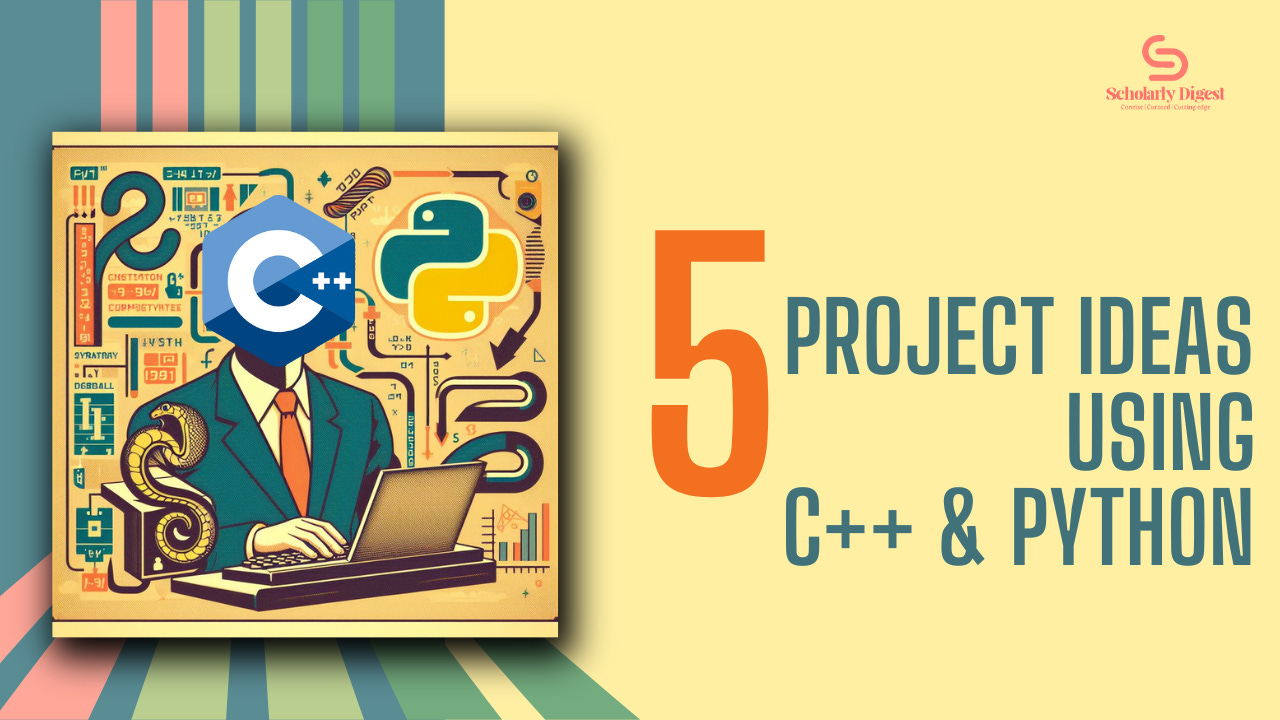5 Practical Projects to Combine C++ and Python
C++ provides immense speed and customization whereas Python provides versatility, flexibility, and reliability. If you know to combine their Power, then the output is magnificent.
Integrating these two languages can unlock a myriad of possibilities. Let's delve into five practical projects that leverage the synergy between C++ and Python to bolster your programming prowess.
1. Automated File Organizer
Introduction: Organizing files on your computer can be a tedious task, but with a little bit of programming, you can create a powerful file organizer that will save you time and effort.
In this project, you'll use C++ to handle the file system operations, while Python will provide the user interface and the logic for categorizing and moving files.
Key Features:
Scan a specified directory for files.
Categorize files based on their file extensions.
Move files to their respective folders (e.g., Documents, Images, Music).
Provide a user-friendly command-line interface using Python's argparse module.
Benefits:
Streamline your file management process.
Reduce clutter and maintain a organized file structure.
Easily adapt the project to your specific needs.
2. Web Scraper with Sentiment Analysis
In this project, create a powerful web scraper that can extract data from websites and perform sentiment analysis on the extracted content.
C++ will handle the low-level network operations and data extraction, while Python will leverage libraries like Beautiful Soup and NLTK to analyze the sentiment of the scraped text.
Key Features:
Fetch web pages using C++ and the libcurl library.
Parse HTML content using C++ and the pugixml library.
Perform sentiment analysis on the extracted text using Python's NLTK library.
Provide a user-friendly command-line interface using Python's argparse module.
Benefits:
Gain insights into the sentiment of online content.
Automate the process of data extraction and analysis.
Leverage the strengths of both C++ and Python for efficient web scraping.
3. Image Processing Pipeline
C++ will handle the low-level image manipulation tasks, such as loading, resizing, and applying filters, while Python will provide the user interface and the ability to chain multiple processing steps together.
Key Features:
Load and process images using C++ and the OpenCV library.
Implement common image processing algorithms in C++, such as grayscale conversion, edge detection, and image blurring.
Create a modular Python interface that allows users to combine multiple processing steps.
Provide a user-friendly command-line interface using Python's argparse module.
Benefits:
Leverage the performance of C++ for intensive image processing tasks.
Enjoy the flexibility of Python for creating custom image processing pipelines.
Easily extend the project to include additional processing steps or filters.
4. Real-Time Data Visualization
C++ will handle the data collection and processing, while Python will use libraries like Matplotlib and Plotly to create interactive, dynamic visualizations.
Key Features:
Collect real-time data using C++ and appropriate sensors or APIs.
Process the data in C++ to extract relevant metrics and statistics.
Communicate the processed data to Python using a messaging protocol like ZeroMQ.
Develop interactive visualizations in Python to display the real-time data.
Benefits:
Gain insights into real-time data through engaging visualizations.
Leverage the performance of C++ for data processing tasks.
Easily adapt the project to different data sources and visualization requirements.
5. Distributed Task Scheduler
C++ will handle the low-level task management and communication between nodes, while Python will provide the user interface and the ability to define and submit tasks.
Key Features:
Implement a task scheduling algorithm in C++ to efficiently distribute tasks across multiple nodes.
Develop a communication protocol in C++ to allow nodes to exchange task information.
Create a Python-based client interface that allows users to define and submit tasks.
Provide monitoring and reporting capabilities through a Python-based dashboard.
Benefits:
Distribute computational workloads across multiple machines.
Achieve high-performance task scheduling and execution.
Enjoy the flexibility of Python for task definition and monitoring.
Author: SAKSHAM JOSHI [Linkedin]



